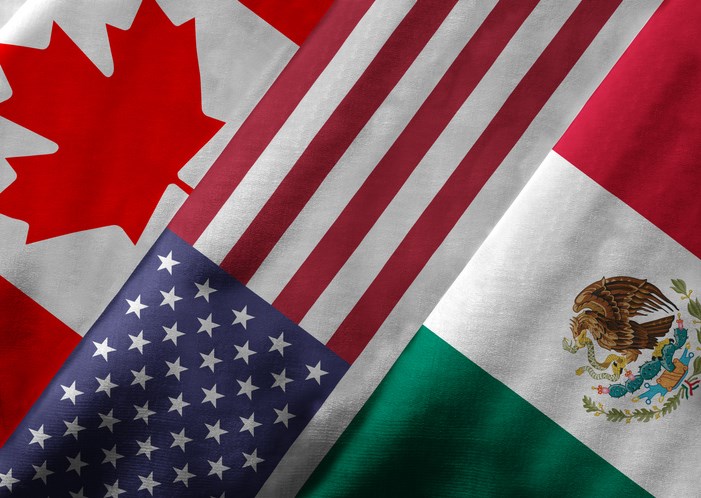Comments on the just implemented Canada-United States-Mexico Agreement (CUSMA) vary from positive features for agriculture to regrets by agriculture.
Farm Credit Canada economist James Bryan sees lots of benefits from the deal with 50 per cent of all Canadian agri-food trade covered by the agreement that came into effect on July 1.
“CUSMA brings trade stability to the sector,” says Bryan. “Stability is one of the critical factors behind processors and exporters decision to invest.”
The trade agreement “largely preserved” the dispute mechanisms from NAFTA, giving fair and transparent procedures to resolve disputes.
The agreement offers increased protection for proprietary information of food companies and recognizes distinct products like Canadian or Tennessee whiskey as well as promoting science-based regulations.
Bryan sees the deal cutting red tape, modernizing documents, lowering trade costs.
By contrast, Carlo Dade, trade and investment director with the Canada West Foundation, says the deal puts all three countries further behind than with the preceding NAFTA deal.
The new deal, he told Real Agriculture, is more complex, with more red tape, more content rules, more paperwork.
“Sometimes the best you can do is limit losses versus making gains,” he commented.
He called CUSMA the Seinfeld Agreement — “the show about nothing.”
It was three and one-half years of drama to get bits and pieces of what had already been negotiated in the Trans-Pacific Partnership (TPP).
The United States walked away from that partnership.
“We still have nothing to protect us from (Trump) tariffs.”
The TPP allowed much freer movement of people between the signatories than CUSMA.
Dade agrees we should look at diversifying trade but the U.S. market is rich and close.
“Let’s not work twice as hard for half the money.”
The biggest departure from tweaking NAFTA was concessions allowing U.S. access to a portion of Canada’s dairy and poultry market, but Dade says we have to wait and see how Canada uses the quota system to meet new rules.
FCC’s Bryan notes the U.S. expects to increase dairy and poultry exports to Canada by $697 million — or 2.69 per cent of 2019 sales.
The industry will feel that, especially at a time when COVID-19 has disrupted sales.
Ron Walter can be reached at [email protected]

.png;w=120;h=80;mode=crop)


